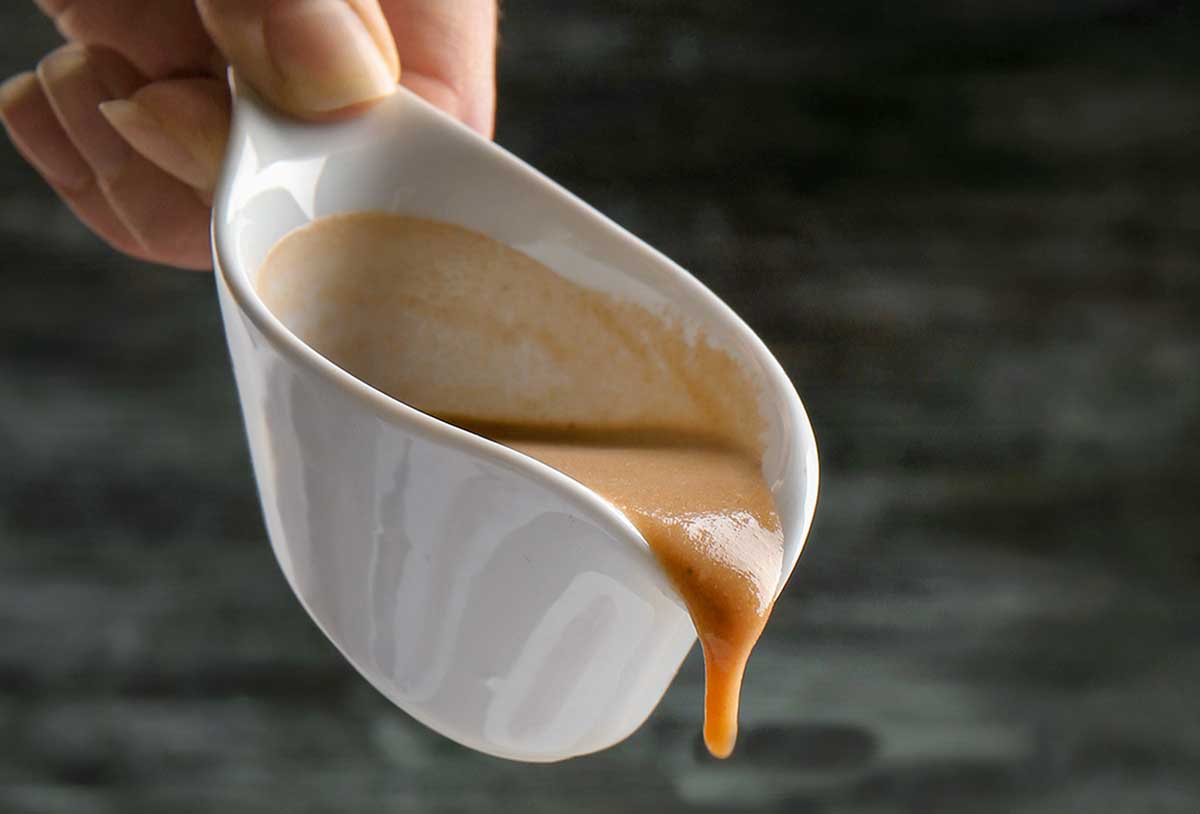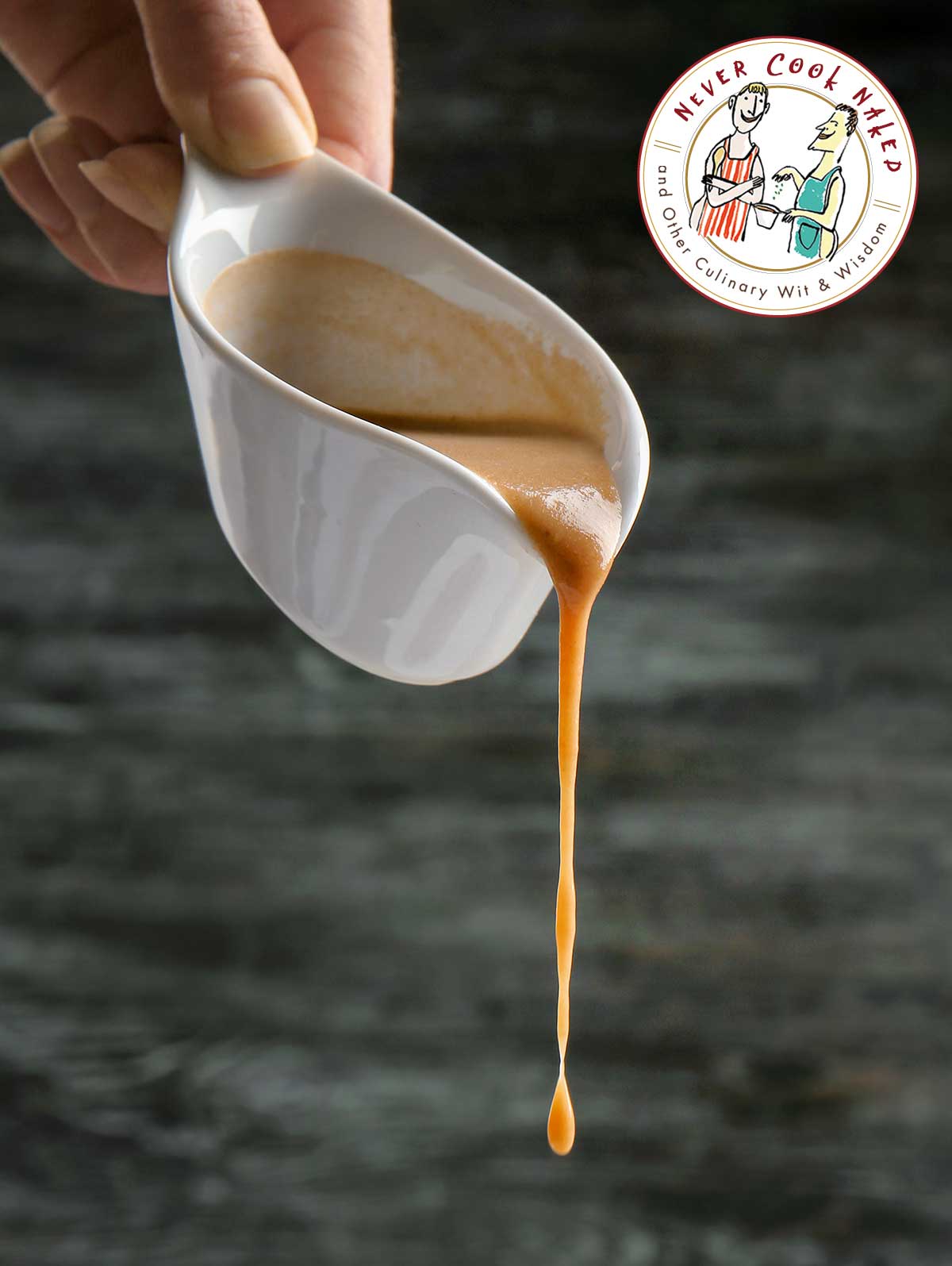
Jump To

Good and Thick Gravy
Dear Never Cook Naked Guys: I’m always flummoxed by sauces. I can never get mine to thicken properly. My grandmother used to add flour by the tablespoon to gravy, but when I try this, I always end up with a sauce that has a raw, pasty taste. Not sure if it’s the heat level, the stirring action, the amount of flour, or…?—Runny Without Reason
Dear Runny: First, the truth, since it will set you free. Raw flour tastes like raw flour. Chances are your grandmother’s gravy tasted like raw flour, but you were too young to notice and your family too nice to say anything.
Even so, here are a few three solutions to your gravy dilemma. Pick one.
1. Add less flour and whisk longer
This is actually a three-part answer. To thicken gravy, frst, use all-purpose flour, not bread flour or—heaven forfend—whole-wheat pastry flour. Second, add it in dribs and drabs—a mere 1 to 2 teaspoons at a time—while whisking with abandon. And last, when you see the right texture in the gravy, don’t remove the pan from the heat. Keep going for 30 to 60 seconds more over the heat, whisking all the while, to ditch that raw-flour taste.
Want to Save This?
2. Choose an alternate thickener
Our preference is potato starch. It’s less tricky than flour and less gummy than cornstarch. It also tends to lend a clear, creamy finish to sauces. Just remember that potato starch must be dissolved in water before it’s added to a gravy or sauce. One tablespoon of potato starch whisked into 1 tablespoon of cold water is plenty for a small cruet of gravy. Add it to a pan of runny gravy while it’s still on the heat and bring the sauce to a full bubble while you whisk without stopping. Gravy’s done.
3. Go with a beurre manié
A who? That is to say, equal parts unsalted butter and flour, kneaded into a dough or paste of sorts. The fat coats the flour, separating the individual molecules so lumps don’t form and preventing the flour-ish taste from being overwhelming. Add beurre manié by the teaspoon to your sauce, whisking constantly over the flame, until you achieve the desired consistency—and then continue whisking a little longer to get rid of that raw flour taste. Wrap the rest of the paste tightly in plastic wrap and save it in the fridge until you feel the urge to enjoy that beverage we call gravy again.
Our very clever, very clothed Never Cook Naked columnists are at your disposal, able to troubleshoot everything from questionable table etiquette to tricky cooking techniques (as well as, natch, proper cooking attire). Curious to learn more solutions to culinary conundrums? Just ask! Drop us a comment below.
Originally published November 21, 2021









I use an old restaurant method. Instead of making a roux in the pan or trying to use corn starch, I make a small pan of roux and whisk it into whatever sauce needs thickening. A light roux has the raw taste cooked out and thickens more than a darker one.
Great tip, Vincent! Thank you.